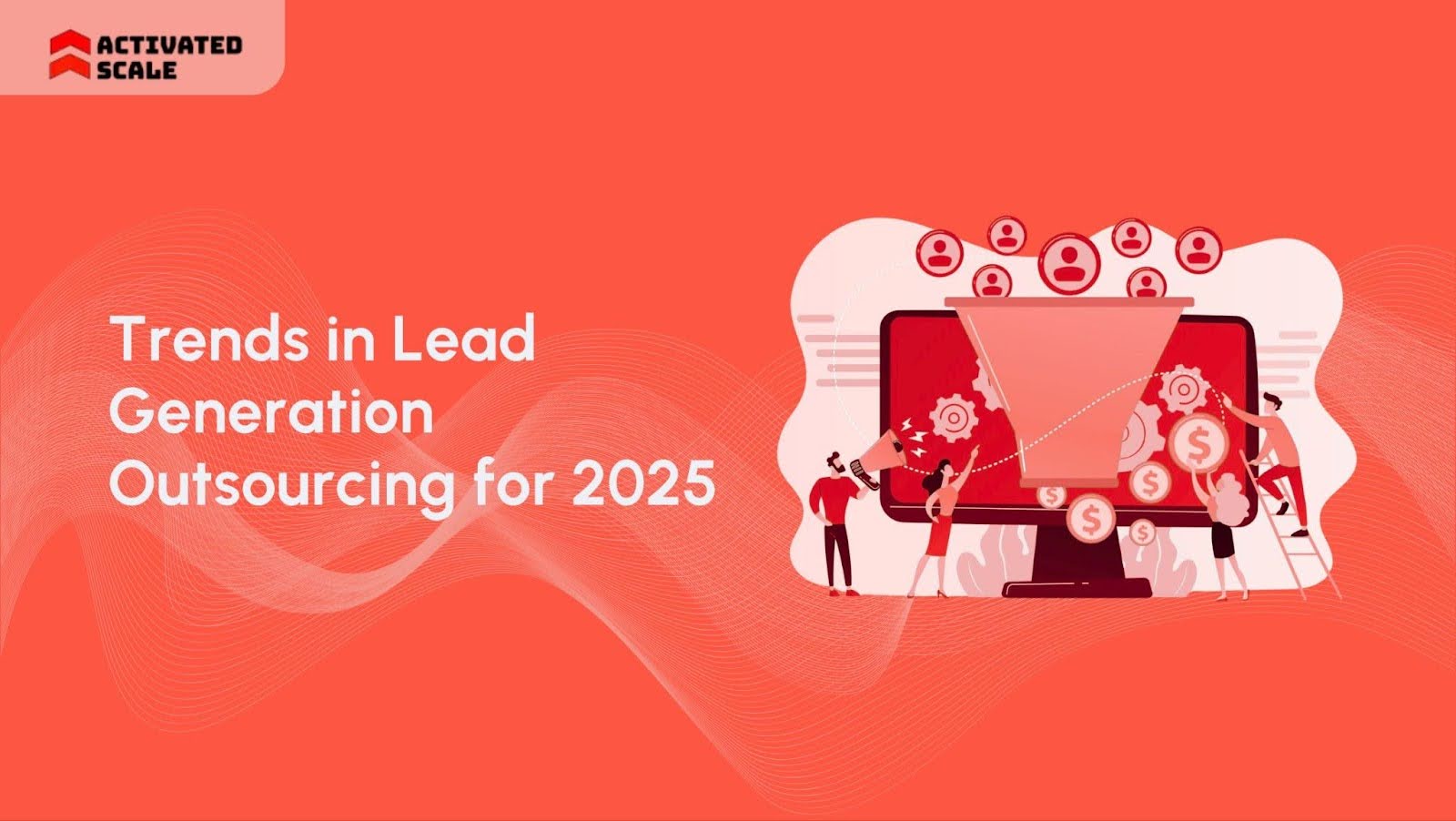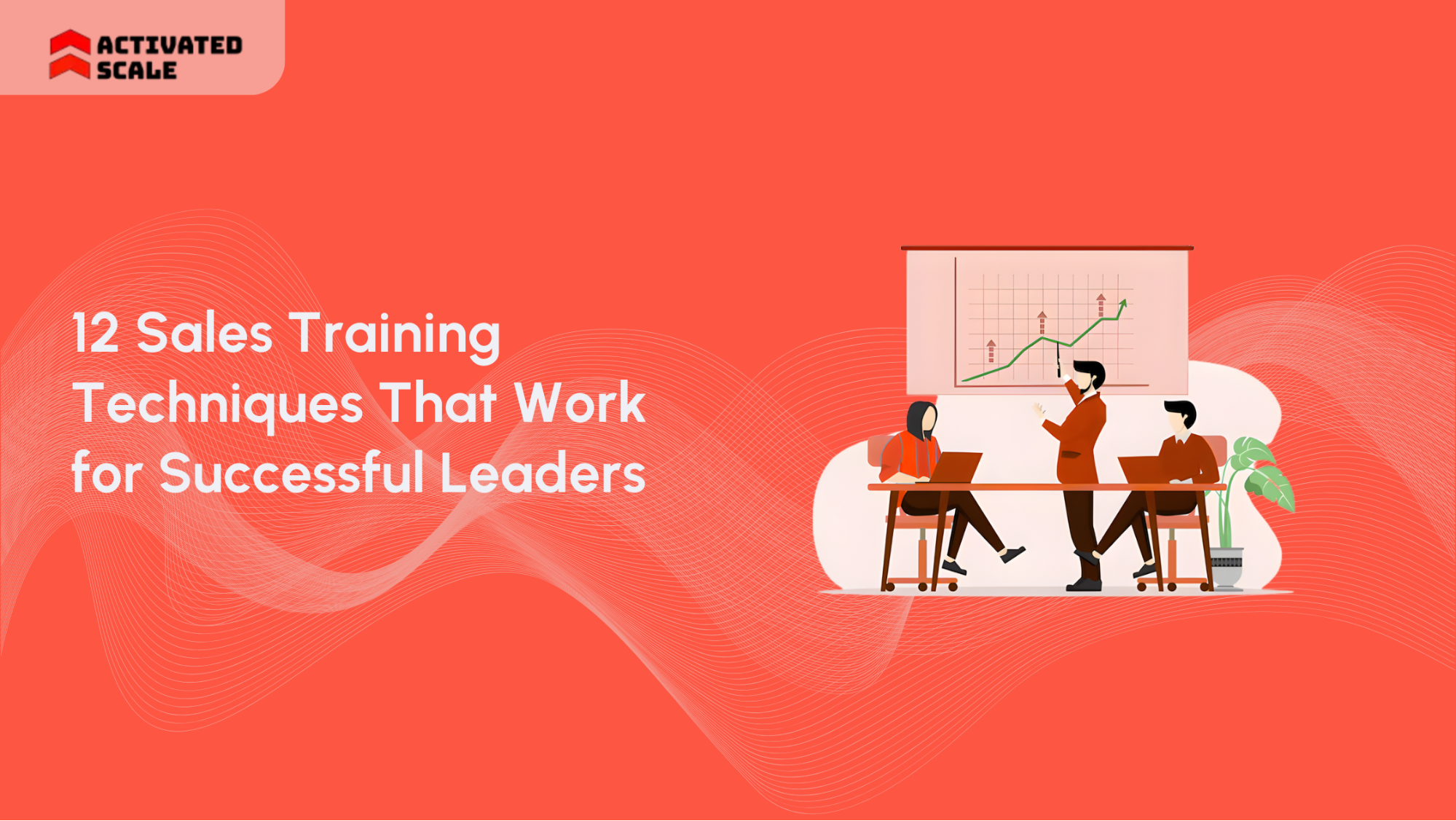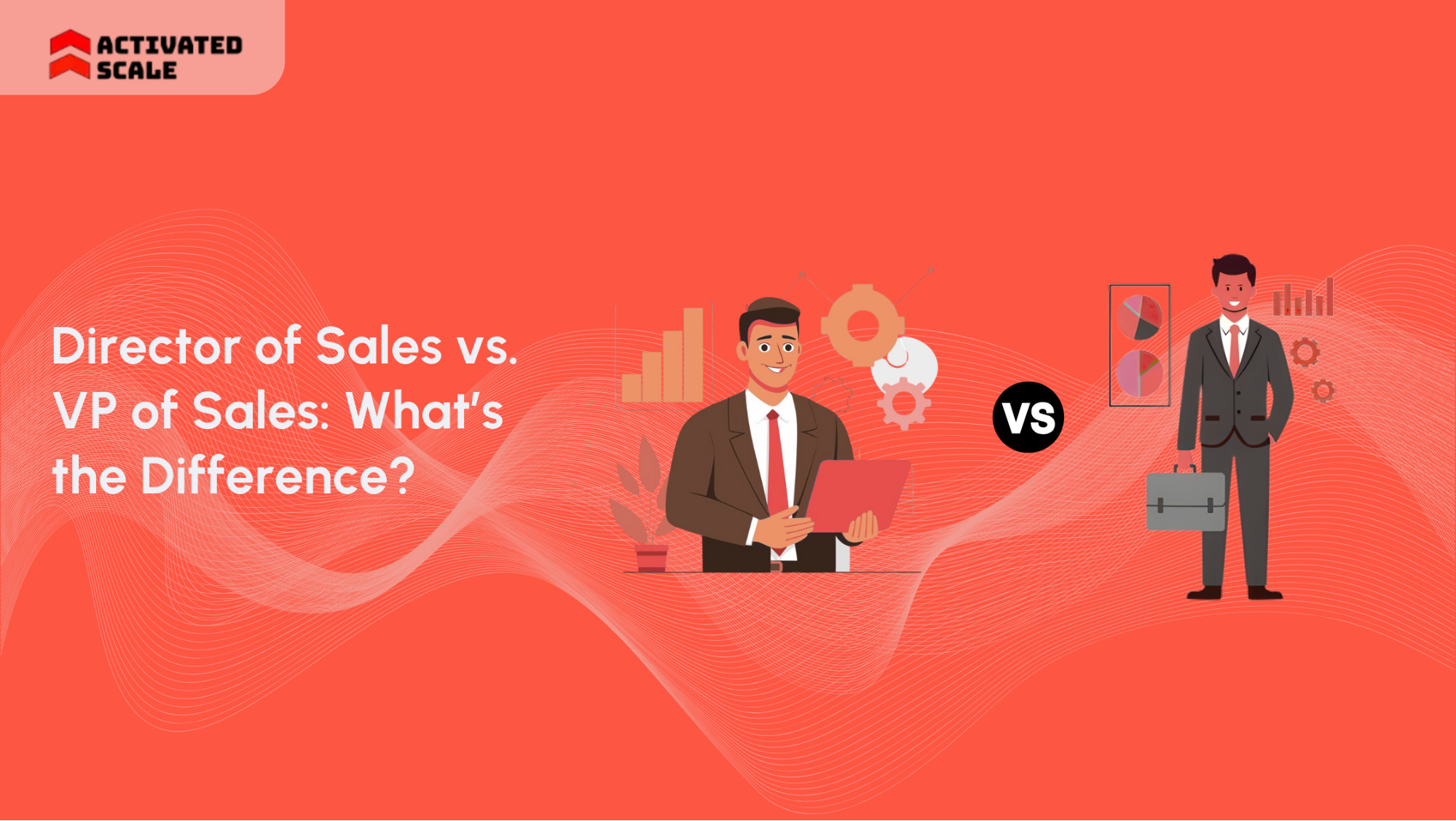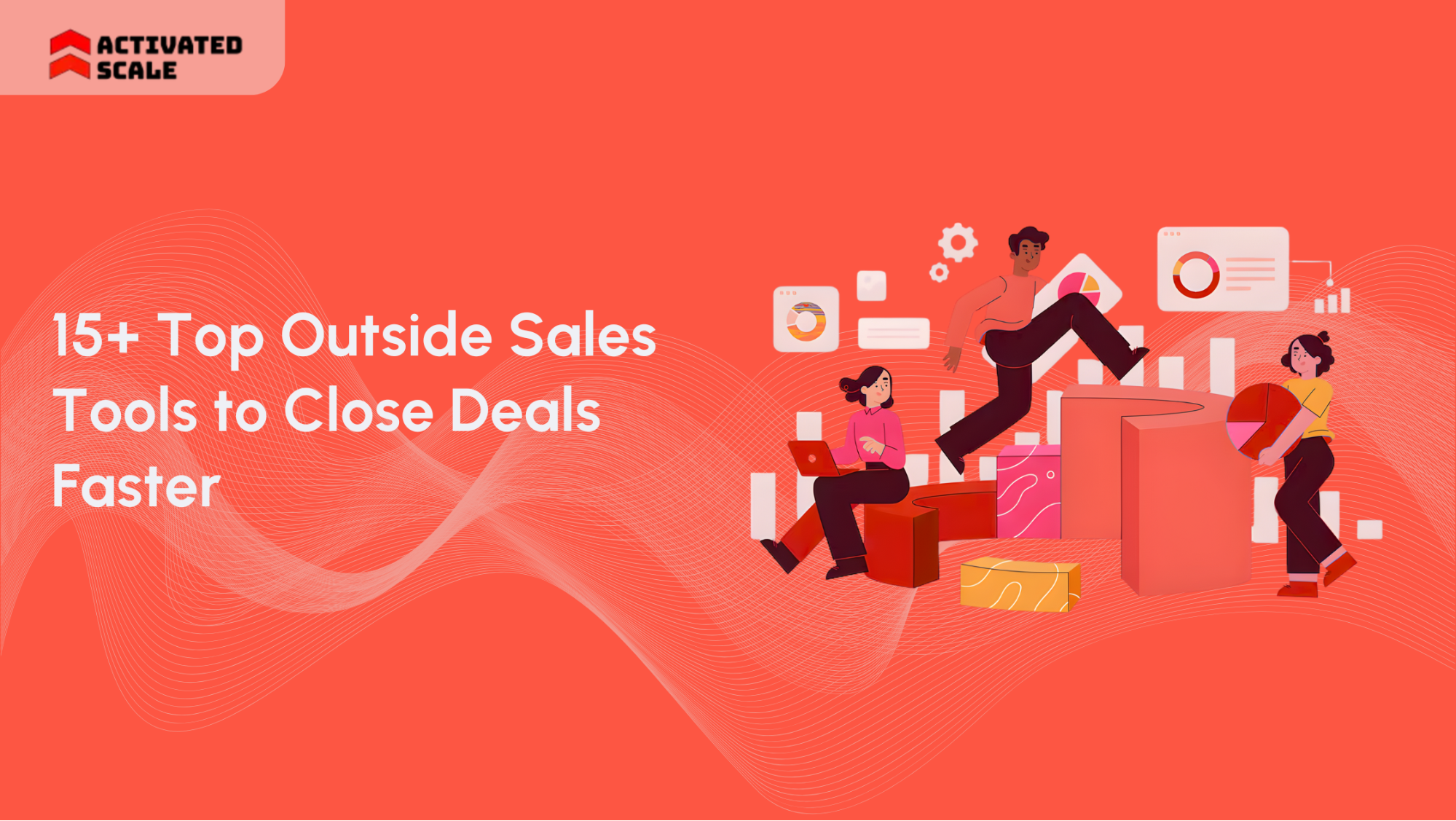Are you finding it difficult to keep up with the changing demands of your prospects? In 2025, many businesses face the same challenge.
As the competition grows and resources get tighter, internal teams often can't keep up. We understand that sales professionals and enterprise leaders face constant pressure to generate high-quality leads. That’s why outsourcing lead generation has become a key strategy.
In fact, 50% of marketers make lead generation a top priority in their marketing strategy. This showcases its importance to business leaders.
To keep you ahead of your competitors, in this blog, we’ll discuss the trends in lead generation outsourcing. You will also learn the practical insights on how to outsource your lead generation.
TL;DR
- Intent-driven targeting is reshaping lead generation by focusing on prospects showing actual buying intent.
- In 2025, the average consumer requires nearly six touchpoints before making a purchase.
- The shift to cookieless prospecting and reliance on first-party data is making lead generation more privacy-compliant.
- Sales-as-a-Service models offer you to scale without the burden of hiring or managing an in-house team.
What is Outsourcing Lead Generation?
Outsourcing lead generation involves hiring external experts to manage part or all of your lead generation process. Instead of building an in-house team, companies turn to specialized agencies or freelance professionals.
The services offered by outsourcing partners vary. However, they typically include cold outreach, lead research, appointment setting, and inbound support. Businesses can choose between fully managed services or hybrid teams that integrate with their internal sales functions. In either case, the goal is to accelerate growth while reducing internal workload.
From cost savings to scalability, the advantages of outsourcing are clear. But how exactly can it help your business excel in a competitive environment?
Read Also: Understanding Outsourced Sales Development
Benefits of Outsourcing Lead Generation

Outsourcing lead generation offers companies an efficient way to scale quickly. This became true for at least 79% of companies. Here’s why more and more companies are opting for this approach:
1. Lower Costs
Outsourcing allows businesses to access expert professionals at a fraction of the cost, saving on salaries, benefits, and training.
2. Faster Execution
External teams are often ready to go, reducing the time it takes to get lead generation campaigns up and running. They come with the tools, expertise, and frameworks necessary for quick implementation.
3. Access to Expertise
Lead generation outsourcing partners bring years of experience and proven strategies. This expertise helps you improve the quality of leads generated.
4. Scalability
As your business grows, outsourcing lets you easily scale lead generation efforts without worrying about hiring or resource allocation. You can adjust your strategy based on market demands and growth opportunities.
5. Focus on Core Activities
Outsourcing allows your teams to focus on higher-value tasks like closing deals, instead of getting bogged down by prospecting and outreach.
Looking to scale your sales team quickly without the long hiring process? Consider the Contract-to-Hire Sales Recruiting service from Activated Scale to hire sales professionals before committing to full-time employment.
As outsourcing continues to grow in popularity, understanding the trends in lead generation outsourcing is crucial.
10 Key Trends in Lead Generation Outsourcing

Staying on top of these trends can help businesses target leads more effectively. Here are the key trends shaping lead generation outsourcing this year:
1. Sales-as-a-Service Models
- Fully managed teams from the top sales outsourcing companies are ready to jump into action from day one. It reduces ramp-up time for lead generation.
- These teams come with all necessary tools and training already in place.
- Sales-as-a-Service models enable companies to scale their efforts up or down based on evolving business demands.
2. Intent-Driven Targeting
- Outsourcing providers now use advanced buyer intent data to identify prospects for a product or service.
- This data allows teams to prioritize leads based on their likelihood to convert, increasing efficiency in outreach.
- With intent-driven targeting, outreach is more relevant and timely. So, prospects receive messages when they are most likely to be interested.
- Companies can better understand the buyer-centric sales journey of prospects, enabling more focused communication.
3. Cookieless Prospecting
- Due to increasing privacy regulations, there’s a shift away from using cookies to track leads. Instead, outsourcing partners now focus on first-party data.
- This compliance-driven shift ensures businesses follow privacy laws such as GDPR while still generating high-quality leads.
- Businesses build trust with prospects who are becoming more concerned about data privacy.
- First-party data is more sustainable as it is collected directly from user interactions.
4. Hyper-Personalized Outreach at Scale
- AI-driven tools enable the mass personalization of messages. Customizing outreach is planned based on each prospect’s behavior and needs.
- Despite automation, there’s still human oversight to ensure messages stay relevant and not robotic.
- Data back personalization efforts. So, it improves the chances of engagement from prospects.
- Businesses see higher conversion rates as prospects feel like they are valued.
5. Account-Based Outsourcing (ABX)
- ABX focuses on targeting a select group of high-value accounts rather than casting a wide net.
- Outsourced teams collaborate with internal teams to customize outreach and strategies to specific decision-makers at target organizations.
- ABX integrates closely with Account-Based Marketing (ABM) strategies. This creates a unified approach to enterprise-level sales.
- 79% of marketers claimed higher ROI from ABM than other methods.
6. Omnichannel Execution
- Multi-channel outreach helps reach prospects where they are most active. This includes email, phone calls, LinkedIn messages, and paid ads.
- Outsourcing teams provide a consistent message across all touchpoints, enhancing brand visibility.
- The average retail consumer in 2025 wants nearly six touchpoints before making a purchase. This trend highlights the importance of connecting with prospects across different channels to drive engagement.
7. Data-Rich Reporting & Dashboards
- Outsourced lead generation teams now provide businesses with real-time dashboards that display key metrics. KPIs include lead quality, conversion rates, and campaign performance.
- These dashboards help by identifying areas for improvement.
- Data transparency ensures both the outsourced team and the business are aligned with objectives and performance standards.
- Detailed reporting enables businesses to adjust their lead generation strategies for better results.
8. Human + AI Hybrid Outreach
- AI automates repetitive tasks, such as initial outreach and follow-up emails. That’s why 65% of marketers are planning to use AI tools in 2025.
- Human sales development representatives (SDRs) focus on building deeper connections with prospects by handling more nuanced conversations.
- Combining AI’s efficiency with human interaction allows businesses to reach a larger audience without losing the personal touch.
- This hybrid approach ensures that while outreach is scalable. Engagement remains high-quality, leading to stronger relationships with prospects.
9. Vertical-Specific Expertise
- Outsourcing partners are increasingly specializing in verticals like SaaS, finance, or healthcare.
- Vertical-specific expertise allows lead generation teams to understand industry jargon and pain points better.
- Businesses can improve their targeting precision and speak directly to the challenges and opportunities of their prospects.
- 76% of marketers prefer high-quality, educated content to keep prospects interested and engaged in the sales process.
10. Transparent Collaboration Models
- Transparent models enable businesses to integrate directly with outsourcing teams through platforms like Slack.
- Businesses' immediate access to campaign progress makes it easier to track results and provide quick feedback.
- Outsourcing teams can quickly adjust tactics based on constant communication skills.
- These open models help build stronger relationships between businesses and their outsourcing partners.
With these trends shaping the future of lead generation, the question isn’t whether to outsource. It’s how to do it right. Let’s break down what it takes to outsource lead generation effectively.
Read Also: SaaS Sales Strategy: Tips and Tactics for Selling Software
How to Outsource Lead Generation Effectively?
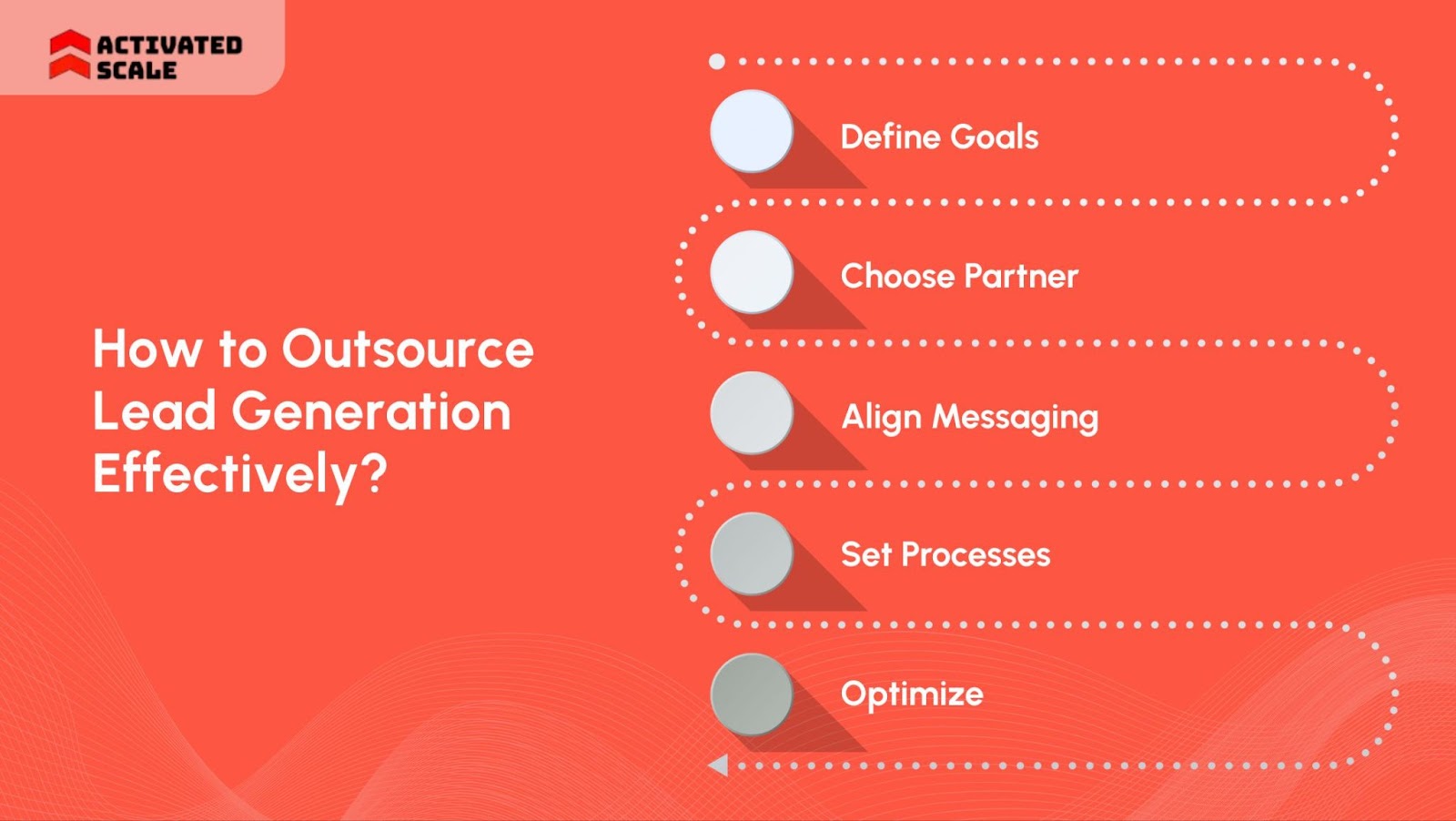
Outsourcing lead generation is helpful to scale your sales efforts. However, to truly maximize its potential, it requires careful planning and execution.
Businesses must align their goals and processes to ensure smooth collaboration. Here’s how to make outsourcing work for your company:
Step 1: Define Your Goals and Ideal Customer Profile (ICP)
- Clearly outline what you want to achieve through outsourcing. From increasing lead volume, improving lead quality, to expanding into new markets, choose your goal wisely.
- Identify the characteristics of your best customers, their industry, company size, and decision-maker roles.
- Set clear lead volume targets and quality criteria to guide your outsourcing partner's efforts and measure success.
Step 2: Choose the Right Outsourcing Partner
- Look for partners who have experience in your industry and a proven track record of success with similar companies.
- Review case studies and service level agreements (SLAs) to ensure that the partner has the expertise needed for your goals.
- Consider the tools and technologies the partner uses. Customer relationship management(CRM) integration and reporting capabilities should cater to your business needs.
Step 3: Align on Strategy and Messaging
- Share your product positioning, brand tone, and objection handling guides with your outsourcing partner to ensure consistent messaging.
- Ensure that the messaging is personalized and context-aware. The outreach should align with your company’s voice while resonating with the specific needs of the target audience.
- Make sure both parties are on the same page regarding the approach to outreach, whether it’s cold calls, emails, or social selling.
Step 4: Set Up Clear Processes and Communication
- Establish clear communication channels with weekly syncs to review progress, discuss feedback, and make necessary adjustments.
- Use shared dashboards for visibility into lead performance, conversion rates, and ongoing efforts.
Step 5: Iterate and Optimize
- Test different channels, scripts, and targeting strategies to find what works best for your business.
- Encourage regular feedback loops so the outsourced team can optimize outreach tactics continuously.
- Stay involved and ensure that there’s a collaborative approach to improving lead generation results over time.
If you are hiring experienced SDRs or a fractional sales leadership team, Activated Scale has you covered. Book a call today to find out how to build the perfect sales team for your business needs.
Conclusion
Trends in lead generation outsourcing in 2025 offer businesses a chance to target prospects more effectively. Embracing trends like intent-driven targeting and omnichannel execution, companies can improve lead quality and overall efficiency.
The key to success lies in choosing the right partner and aligning your goals, strategy, and communication.
At Activated Scale, we help businesses connect with top-tier sales talent. Our Fractional Sales Leadership and Fractional Selling services are designed to help you achieve sustained growth.
Schedule a personalized demo to learn how we can support your lead generation efforts with experienced professionals.
FAQs
What’s the difference between freelance SDRs and agency models?
Freelance SDRs (Sales Development Representatives) are individual contractors offering flexibility and typically lower rates. However, they may require more oversight and management.
On the other hand, agency models provide a full team of experts and often include a broader range of services. For example, data analysis and reporting. Agencies offer more structure but can come with higher costs.
Can outsourced teams handle appointment setting, too?
Yes, most outsourced lead generation teams offer appointment setting as part of their services. This includes reaching out to prospects, qualifying them, and scheduling meetings for your internal sales team.
It helps simplify your sales process so that your in-house team spends more time closing deals.
How do I ensure lead quality from a third-party provider?
To ensure lead quality, set clear expectations with your outsourcing partner regarding the types of leads you want to target. Provide them with a detailed Ideal Customer Profile (ICP) and quality criteria.
Also, ensure that they use advanced data analytics and follow up regularly to assess.
What’s the typical ramp-up time when outsourcing lead generation?
Ramp-up time for outsourced lead generation typically takes 2-4 weeks, depending on the complexity of the campaign.
During this period, the outsourcing team familiarizes itself with your ICP, messaging, tools, and CRM systems. Once the team is fully onboarded, they should be able to generate leads at full capacity.
The Ultimate Guide to Hiring a Salesperson!
Get the step-by-step guide to hiring, onboarding, and ensuring success!
_edi.png)
